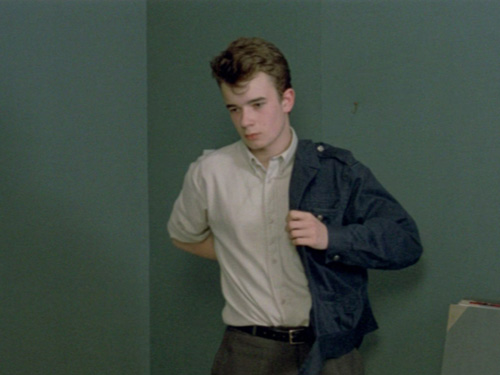
“Is it for singing always the same song that the nightingale is so admired?”
Robert Bresson, Notes on the Cinematographer1
“Ik heb een video-opname van de prijsuitreiking in Cannes 1983, waar de Gouden Palm werd uitgereikt aan zowel de toen 76-jarige Bresson voor zijn laatste film L’argent als aan Andrej Tarkowski voor Nostalghia. Wanneer Bresson, die naar voren werd geroepen door Orson Welles, het podium betreedt, barst een tumult los, een razende akoestische strijd tussen boe-schreeuwers en toejuichers. Men moet herhaaldelijk om kalmte vragen – pas als Tarkowski van het podium wordt gehaald, gaat de proteststorm liggen. (Tarkowski, zelf een openlijk bewonderaar van Bresson, kan hier niet blij mee geweest zijn. Wat hij aan de films van zijn idool had geprezen, was juist hun onafhankelijkheid van de smaak van het publiek, waarvoor Bresson nu werd uitgejouwd voor zijn ogen, terwijl hij, die evenzeer werd belasterd als een hermeet, werd toegejuicht.) Wat in Bressons film had die houding in de zaal van Cannes – die voor de houding van het mondiaal publiek stond of minstens wilde staan – veroorzaakt? Aan de inhoud kon het niet liggen – films die over de bittere toestand van het wereldgebeuren gaan, zijn er op elk festival in overvloed; hoe aangenamer en vlotter ze zich instellen op onbehagen, des te meer kansen ze hebben om daarvoor te worden bedankt door juryleden en feuilletonschrijvers.”
Michael Haneke2
“L’argent pursues an implacable logic, working its way through many characters, incarnated and propelled by a style by now so aurally and cinematographically meticulous that it is impossible to separate it from the subject. Arguably more compressed than any film since The Trial of Joan of Arc, with the exception of Lancelot of the Lake, L’argent establishes the situations of eight characters in its first twelve minutes. Though driven neither by a strong main character or an overtly spiritual subject, the sense of underlying purpose and foreseen end is as resolute as ever. Because of this, the film once again declares the operation of a theo-rhetoric in Bresson’s work, in which a ruling design is imposed not only on its theme, but also on its form and structure. Yet although God may be an insinuating, though distant force in the mechanics of the plot and in certain cinematographic details, the driving principle of the film’s first three quarters is underwritten by an opposing value. Indeed [...], the core images of L’argent – namely, the close-ups of money changing hands – do more than exemplify a theme. Unlike the core images identified in Diary of a Country Priest, A Man Escaped, and Pickpocket, the ones in L’argent are not confined to an individual but constitute a communal rite, enacting transactions between and among all characters. As such, they symbolize the more general material nature of exchange that pervades the film, affecting relationships between characters and situations in the narrative as well as relationships between shots, spaces, and cinematographic tropes. Given the complexity of this execution, it is all the more intriguing that in interviews Bresson said that although he used a storyboard as always, he felt himself working more freely, more intuitively on L’argent.”
Tony Pipolo3
- 1Read the Dutch translation of Bresson‘s Notes here at Sabzian.
- 2Michael Haneke, ‘Terreur en utopie van de vorm,’ 1995 (vertaald door Gerard-Jan Claes en Marie Claes, Sabzian, 2013).
- 3Tony Pipolo, Robert Bresson. A Passion for Film (New York: Oxford University Press, 2010), 332.

